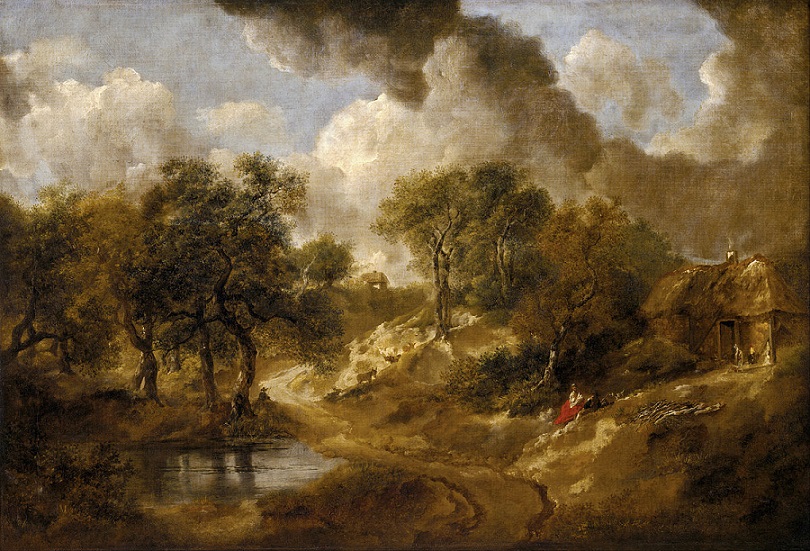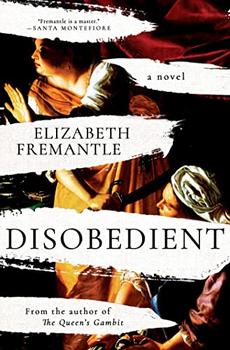
A Novel
by Emily HowesA "beautifully written" (Hilary Mantel) story of love, madness, sisterly devotion, and control, about the two beloved daughters of renowned 1700s English painter Thomas Gainsborough, who struggle to live up to the perfect image the world so admired in their portraits.
Peggy and Molly Gainsborough—the daughters of one of England's most famous portrait artists of the 1700s and the frequent subject of his work—are best friends. They spy on their father as he paints, rankle their mother as she manages the household, and run barefoot through the muddy fields that surround their home. But there is another reason they are inseparable: from a young age, Molly periodically experiences bouts of mental confusion, even forgetting who she is, and Peggy instinctively knows she must help cover up her sister's condition.
When the family moves to Bath, it's not so easy to hide Molly's slip-ups. There, the sisters are thrown into the whirlwind of polite society, where the codes of behavior are crystal clear. Molly dreams of a normal life but slides deeper and more publicly into her delusions. By now, Peggy knows the shadow of an asylum looms for women like Molly, and she goes to greater lengths to protect her sister's secret.
But when Peggy unexpectedly falls in love with her father's friend, the charming composer Johann Fischer, the sisters' precarious situation is thrown catastrophically off course. Her burgeoning love for Johann sparks the bitterest of betrayals, forcing Peggy to question all she has done for Molly, and whether any one person can truly change the fate of another.
A tense and tender examination of the blurred lines between protection and control, The Painter's Daughters is a searing portrait of the real girls behind the canvas. Emily Howes's debut is a stunning exploration of devotion, control, and individuality; it is a love song to sisterhood, to the many hues of life, and to being looked at but never really seen.
Peggy and Molly Gainsborough are sisters and best friends, living an idyllic life in 18th-century Ipswich where they explore the countryside with their artist father. But Molly isn't well—she has episodes of confusion and dissociation, forgetting where she is or what she's doing. The Painter's Daughters follows Peggy's journey to adulthood as she struggles with her fear for and anger at her sister, as well as finding her place in the world. Howes' debut is hard to put down once you've started, but unsurprisingly emotionally heavy, given the difficult issues it grapples with. I cannot recommend it enough for readers looking for a nuanced, character-driven story...continued
Full Review
 (567 words)
(567 words)
(Reviewed by Katharine Blatchford).
 Emily Howes' enthralling debut novel, The Painter's Daughters, features a fictionalized version of the lives of Molly and Peggy Gainsborough. Their father, Thomas Gainsborough, was one of the most influential British painters of the 18th century.
Emily Howes' enthralling debut novel, The Painter's Daughters, features a fictionalized version of the lives of Molly and Peggy Gainsborough. Their father, Thomas Gainsborough, was one of the most influential British painters of the 18th century.
Gainsborough, born in 1727, was the youngest of John and Mary Gainsborough's nine children. His father was a wool manufacturer in Sudbury, Suffolk. He lived there until the age of 13, when he was sent to London to study under Hubert-François Gravelot, a French painter and illustrator. From him, Gainsborough gained exposure to the Rococo style, which heavily influenced his work. In 1746, he married Margaret Burr, and they went on to have the two daughters who are the main characters of the ...

If you liked The Painter's Daughters, try these:

by Sarah Perry
Published 2025
A dazzling new work of literary fiction from the author of The Essex Serpent, a story of love and astronomy told over the course of twenty years through the lives of two improbable best friends.

by Elizabeth Fremantle
Published 2023
A riveting novel based on the life of Artemisia Gentileschi—the greatest female painter of the Renaissance—as she forges her own destiny in a world dominated by the will of men.
We've heard that a million monkeys at a million keyboards could produce the complete works of Shakespeare...
Click Here to find out who said this, as well as discovering other famous literary quotes!